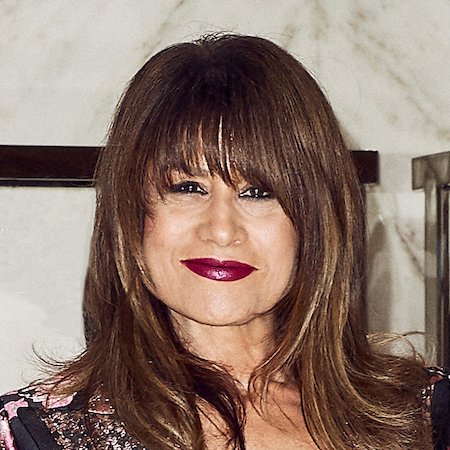E Ink technology is responsible for how the popular Kindle reader tablets present content, reflecting light versus generating brightness to create contrast. In church signage and wayfinding, the technology finds another ideal fit. Image: Visionect
In the creation of modern worship spaces, church architects and designers are challenged to balance the beautiful aspects of design with practical use of space. While often not directly specified in designs, the use of effective signage can help achieve that balance, helping with wayfinding, room scheduling, and general engagement of a congregation in church activities. In recent years, the popularity of video content has made flat panels a popular choice for indoor and outdoor signage on church campuses, but another technology that is network-updatable, more eco-friendly, and better suited to the display of graphic images is now offering churches another option. Signage based on E Ink technology is less “loud” than video displays in worship spaces and offers a more artistic platform for graphics, similar to traditional printing on paper.
One of the most beneficial features is that when deployed to outdoor locations or near windows, E Ink displays don’t have to compete with the sun’s brightness.

An option for outdoor signage on church campuses, E Ink's technology is network-updatable, eco-friendly, and ideally suited to the display of graphics.
E Ink technology is responsible for how the popular Kindle reader tablets present content, reflecting light versus generating brightness to create contrast. “E Ink relates the beautiful look of printing on paper,” says Jonathan Margalit, Ph.D., E Ink’s senior business development manager, “and it has the unique advantages of a light-reflective technology.” One of the most beneficial features is that when deployed to outdoor locations or near windows, E Ink displays don’t have to compete with the sun’s brightness. “In the same way that the Kindle can be easily read on a sunny beach,” says Margalit, “signage that employs E Ink displays is easily readable even in bright sunlight.”
Engaging attendees—and the community at large
“In the design of church facilities today, a high priority is placed on creating multipurpose spaces,” notes Andrew Beyea, AIA. As director of design at Maryland-based Waldon Studio Architects, Beyea has seen how the purpose of church spaces change dramatically depending on events or different ministry use. “The E Ink signage would be a good solution to allow for interchangeability and still feel like a fixed feature,” he offers. “Their larger format screens with remote content management would be useful to avoid printing posters or making hand-drawn signs for events or temporary wayfinding.”

AMYRAAB
Andrew Beyea, AIA, Director of Design, Waldon Studio Architects/Michael Graves Architects, Columbia, MD
Beyea also feels that this new technology could help church spaces feel less fragmented. “There are benefits offered by this type of signage that feels more like a fixed feature and less of a temporary measure,” he notes. “Temporary signage can detract from a complete cohesive look of a space. Plus, the E Ink rendered graphics can be [periodically changed] out, so displays could both improve the use of space and save money over time.”
Jacquelyn Block, director of the Church Works Studio at GFF in Dallas sees creative possibilities in new technology beyond typical signage. “It looks interesting,” she says. “This print-like technology would allow churches to have rotating art and create engagement with their congregation with ‘feature walls.'" She also envisions the possibilities presented by interactive whiteboards and e-writers, which can be attributes of E Ink elements. “It looks like they could be a good option for hybrid working, allowing collaboration with people in different locations,” she notes.
How the technology works
E Ink displays have the look of real print because they use actual ink particles encased in a film layer. Millions of bi-stable ink particles in the film layer react to changes in polarity from a Thin Film Transistor (TFT) backplane layer, controlling which particle colors become visible at the top. The result is a display upon which lettering and graphics look very much like they would on paper. A protective cover layer protects the display from potential damage and the elements.
Assembled into a non-emissive display, the technology offers the considerable benefit of not needing backlighting of any sort. As a result, the displays are inherently easy on the eyes, offer a wide angle of view, and have a very low power consumption—with no power draw once an image is presented. Materials used for the film, backplane, and cover elements in E Ink displays are lightweight, flexible, and shatterproof.

Ideal for church schools, too, the materials used for the film, backplane, and cover elements in E Ink displays are lightweight, flexible, and shatterproof. Image: Visionect
Working with partners over a large cross section of industries, E Ink’s goal is to provide signage solutions that are clean-looking, aesthetically pleasing, and extremely functional, being easily updated from a server by a person remotely. E Ink’s partners develop innovative products and turnkey system solutions around display modules in popular sizes of 13.3-inch, 25.3-inch, 28-inch, 31.2-inch, and 42-inch options to facilitate drop-in flat panel replacements, as well as to accommodate industry-standard aspect ratios. The lightweight display modules measure less than 1mm in thickness and are extremely lightweight (the 42-inch display, for example, weighs in at under 2.5 pounds).
While E Ink displays might be new to churches, it’s important to note that the technology itself has seen much success. Along with Kindle readers for consumer and industrial use, E Ink displays are in use in many challenging environments in museums, municipalities, and transit agencies. “The technology has proven itself in thousands of installations since 2012,” says Margalit, “even in the most extreme climates and conditions.”
Eco-friendly, engaging signage
“The right digital signage can make complex facilities and entry procedures easy for all to navigate, and do it in clear and graphically beautiful ways,” says Sharon Exley of Architecture Is Fun in Chicago (a collaborative practice that explores the nexus of architecture, education, community, and experience). “Especially for houses of worship, creating an attractive, visible welcome is critical to successful visitor experiences. Tasteful digital signage can help to do that in graphic and attractive ways, helping to do away with messy, distracting, and ad-hoc display alternatives.” In her experience, just one flexible graphic element like an E Ink display can be more visible and impactful than the white noise of a hundred banners, posters, flyers, and bulletin boards.

Sam Grant Photo
Sharon Exley, MAAE, Associate ASID, Co-Founder, Architecture Is Fun, Chicago, IL
In addition to other benefits, the International Dark-Sky Association has certified E Ink as being Dark-Sky approved, meaning that like other approved products, E Ink displays minimize glare while reducing light trespass and skyglow. The lack of light pollution from these displays is evidence of its contributions to overall sustainability. Power studies have shown that E Ink displays can boast 28x less power consumption than similarly sized LCD displays, and zero power consumption when static. Results like these indicate that solar power options are extremely viable for E Ink displays, freeing designers to deploy signage where it is most useful and not just where typical power distribution dictates.
“When we specify low-power or solar-driven methods for communications,” notes Exley, “we are additionally being responsible with natural resources. As designers and architects, we love the story of being both responsible and relevant.” Exley sees making a forward-thinking investment in resource-aware digital graphics as good business. “These signs are changeable, adaptable, and, coupled with strong messaging, could be very effective,” she says. “Plus, over time, they would offer a good return on investment for the environment and the congregation.”
To learn more about E Ink technology and family of products, visit E Ink.








